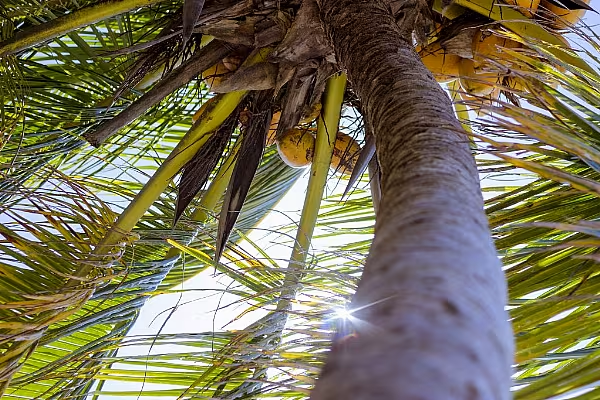Coconuts seem to be everywhere these days. Whether as “water” in PepsiCo Inc.’s Naked drink range, as “milk” in Starbucks Corp.’s coffees, as shampoo in L’Oreal SA’s products or even as a patty in Beyond Meat’s vegan burgers, the tropical fruit has captured new markets with a growing reputation as a healthy, natural product.
The popularity has been a boon for prices, with the cost of coconut oil alone more than doubling since its low in 2013. But it hasn’t translated into increased production as diseases, natural disasters and aging plantations kept global output stagnant over the past decade.
That’s about to change thanks to a program of replantings and rehabilitation across the tropics. Output of copra, the dried coconut meat that’s used to make coconut oil, will jump more than 30 percent in the decade to 2026 as yields in the biggest growers rebound, according to a July 10 report by the Organization for Economic Co-operation and Development and the United Nations’ Food and Agriculture Organization.
A recent study by IRI also found that sales of beauty products using coconut ingredients is on the up: read more here.
Many Uses
“The international market is not only buying the oil, which they purify into cooking oil,” Danilo D. Valdez, the managing director of trading company Raco Commodities Phils. Inc., said in a July 20 interview. “They also have found out uses for virgin coconut oil, coconut water, and those kinds of derivatives products from coconut which are very good for people, that they’ve positioned for an organic and healthy lifestyle.”
The key to the coconut’s popularity comes from the many products that a single nut produces. One package offers a high-energy food, a versatile oil, a nutrient-rich water, and coir - a fiber that’s used to make rope and bedding. And that’s all contained in a water tight package that helped it spread across the globe’s tropical regions from the Philippines to the Caribbean.
Its versatility has led to the coconut being dubbed the “Swiss Army Knife” of plants and has made it staple product in many countries. It remains so important in the Philippines, the biggest producer of copra, that the FAO estimates a quarter of its 100 million people are dependent on industries associated with it.
Huge Demand
“There’s great demand in foreign countries like South Korea and Canada,” said Carlito D Villamayor, a coconut farmer in the Philippine province of Quezon who’s switched his palms to make coconut sugar rather than copra because prices are higher. “Now China is ordering from us, so we have to increase our production.”
Investment in production will lift copra output by 1.1 million metric tons by 2026, according to the OECD and FAO report. Plantation yields in Southeast Asia will climb 15 percent in that time thanks to the replanting of aged palms and rehabilitation of growing areas, particularly in storm-hit parts of the Philippines and Indonesia - which provide almost three quarters of global copra production between them.
That follows a decline of more than 5 percent in the 12 years to 2016 due to aged palms, pests and diseases, which effectively neutered the 1 million hectares of new coconut plantings in the past decade, according to the FAO.
News by Bloomberg, edited by ESM. Click subscribe to sign up to ESM: The European Supermarket Magazine.














